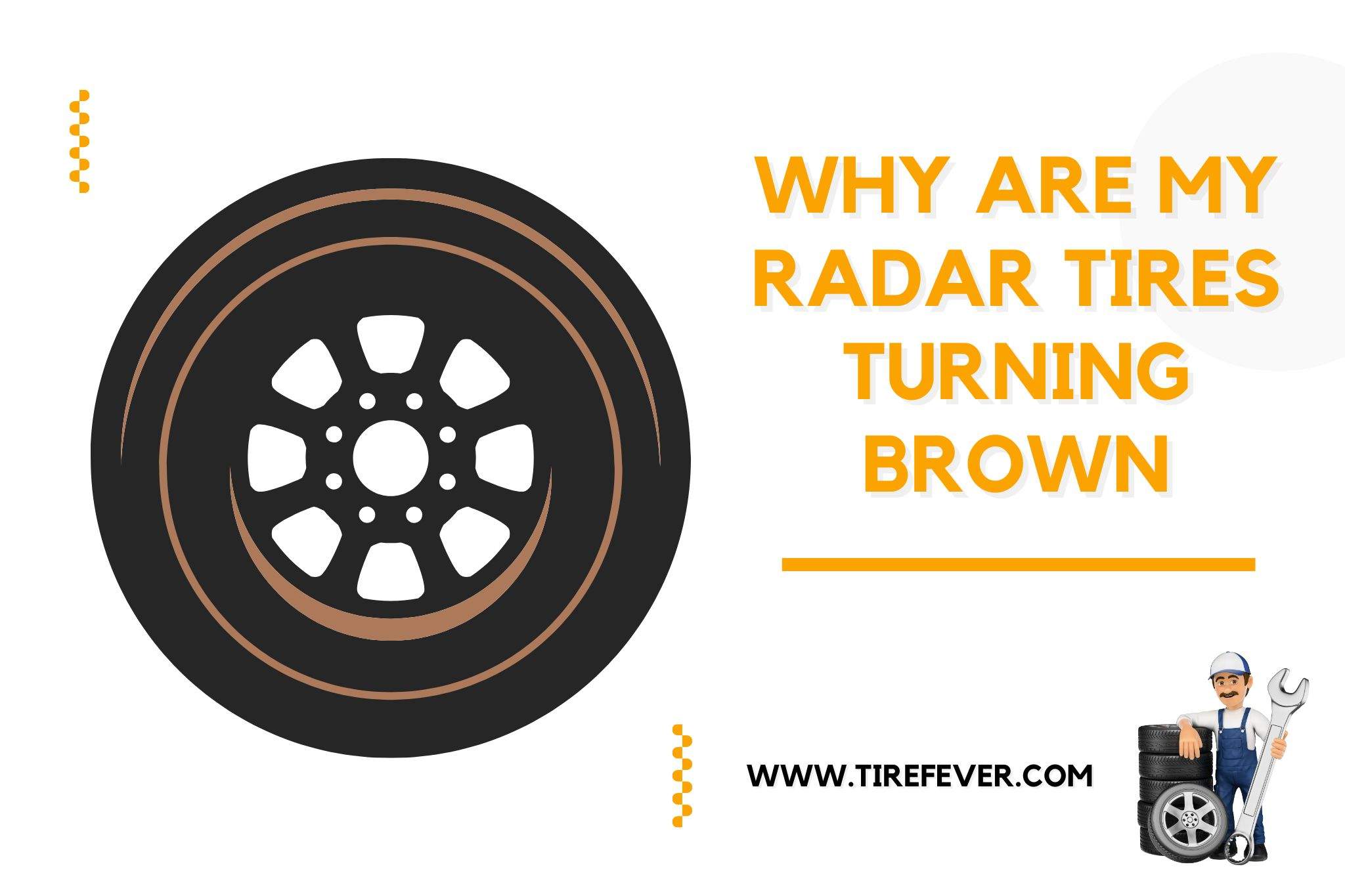Are you left scratching your head, wondering, “why are my Radar tires turning brown?” You’re not alone in this strange predicament. Many individuals have encountered this unusual phenomenon and are seeking answers to the same puzzling question.
Delving deeper into tire care and maintenance, we should understand that tires are not just simple rubber components. They’re complex structures made from a mix of different materials, designed to withstand various road conditions. The changing color of your Radar tires could be indicative of a number of factors.
In this blog post, we will explore these possibilities in depth, leaving you well-informed about your tires’ health and overall maintenance.
why are my Radar tires turning brown
Radar tires may turn brown due to a process called “blooming,” where antiozonants and other compounds in the rubber migrate to the surface. This natural reaction protects the tire from ozone damage.
Blooming occurs over time and is more noticeable with infrequent use or improper storage. Regular cleaning and protecting tires from direct sunlight can help minimize this effect.
You May Also Like: BFGoodrich vs Nitto All-Terrain Tire Comparison
Causes of Radar Tire Discoloration
Radar tire discoloration often stems from chemical reactions, such as the interaction between the rubber compounds and environmental factors like UV light, ozone, and road salts. This process, known as blooming, brings certain protective substances to the surface, causing a change in color.
Improper maintenance can also contribute to tire discoloration; tires exposed to harsh cleaners or left with accumulated grime may display uneven wear and unsightly marks. Regular cleaning with appropriate products is essential to preserve both the health of the tires and their aesthetic appeal.
Tire blooming & Does it Affect tire performance
Tire blooming refers to the process where tires develop a gray or brownish film, often mistaken for dirt or age-related wear. This discoloration is typically the result of antiozonants and other protective compounds within the tire’s rubber coming to the surface, a phenomenon known as “tire blooming” that inherently doesn’t affect tire performance.
Despite its unsightly appearance, tire blooming does not impact the structural integrity or traction of your tires. Regular cleaning with dedicated tire-cleaning products can easily remove this film and restore the original black appearance without compromising safety or functionality on the road.
How To Prevent Radar Tires From Turning Brown
To maintain the aesthetic appeal of your Radar tires, regular cleaning with mild soap and water is crucial. It’s essential to remove road grime, brake dust, and other contaminants that can cause sidewalls to turn brown or show unsightly browning often referred to as tire blooming.
Protecting your tires with a quality rubber protectant or tire dressing that specifically states it prevents browning can help preserve the original look. Applying such products creates a barrier against UV rays and oxidation, which are common culprits behind the discoloration of tire sidewalls over time.
Also Read: Viking Tires Brown Discoloration Causes
How Do you Remove Browning From Radar Tires?
To eliminate browning from radar tires, begin by thoroughly washing the tires with soapy water to remove any loose dirt and grime. Next, apply a tire cleaner that’s specifically formulated to combat browning; these cleaners often contain chemicals that break down the antiozonants or other compounds responsible for the brown film on the surface of the tire.
After applying the cleaner, use a stiff-bristled brush to scrub the tires diligently, ensuring you reach deep into the tread and sidewall patterns. Rinse off all soap and cleaner residue with a strong jet of water, which will leave your tires looking refreshed and free from unsightly browning. Regular cleaning and maintenance with appropriate products not only enhances your vehicle’s aesthetics but also extends the life of your radar tires by preventing degradation from environmental factors.
Overall Radar Tire Maintenance And Care
Regular inspection of Radar tires is crucial for maintaining optimal performance and ensuring safety on the road. Look for signs of wear, such as uneven tread patterns or bald spots, as these can indicate the need for tire rotation or alignment to sustain even tire wear and extend their lifespan.
Maintaining proper tire pressure is vital for Radar tires, as it impacts fuel efficiency, handling, and the prevention of premature wear. Always adhere to the manufacturer-recommended PSI levels found in your vehicle’s owner manual or on the door jamb, checking monthly and adjusting when necessary due to temperature fluctuations.
Protect your Radar tires from the elements by avoiding prolonged exposure to direct sunlight and harsh weather when parked. Use tire protectants that shield against UV rays and keep them clean from oils, fuels, and other substances that could degrade rubber compounds over time.
Also Read: Starfire Tire Browning Causes
Final Thoughts
The browning of Radar tires, often called blooming, is a natural process where protective chemicals like antiozonants migrate to the surface and cause discoloration. This reaction helps shield the tires from ozone damage but can be unsightly.
Frequent cleaning with specialized tire cleaners and regular maintenance, such as ensuring proper tire pressure and reducing exposure to UV rays with protectants, can minimize this effect without impacting tire performance.
Neglecting these practices can exacerbate browning, so it’s important to care for your tires to preserve both their function and appearance.
This post contains affiliate links. Read the full disclosure here.


I am passionate about all things automotive and have a deep understanding of the topic. As a mechanic, I use my free time to share knowledge of everyday challenges that any car owner can experience – helping you make informed decisions about tires.

